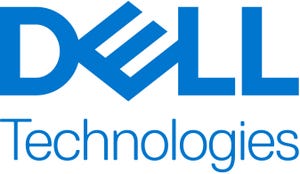Simplifying Complex Fabrics with Open Source Based SolutionsSimplifying Complex Fabrics with Open Source Based Solutions
SONiC helps bring ease of application workload management and data traffic across core to cloud to edge
May 22, 2023

While modern applications and workloads migrate from the data center out to the edge, the complexity of the supporting network infrastructure has been increasing exponentially. The proliferation of edge devices creates a litany of management silos and security headaches for network administrators, as legacy network solutions often struggle to provide the flexibility and innovation to support new initiatives, much less drive added value. Organizations need a modern infrastructure that can support these new demands.
This is one reason why open-source-based solutions have been gaining so much momentum recently in IT. SONiC (Software for Open Networking in the Cloud), is an open-source network operating system that has been recently revolutionizing the networking ecosystem.
Originally developed as a hyperscale solution for the cloud, a thriving support community, an increasing number of users, and a growing ecosystem of vendors have caused its adoption in mainstream network fabrics to grow rapidly over the past few years. Some industry analysts predict that SONiC switching could exceed $5 billion in revenue by 2026.
Benefits of SONiC
Without a clear view of the entire fabric, segments of the network become like a black box. You know what goes in and what comes out, but not what's happening in-between. The data center may not be aware of what's happening at the edge, and edge devices can become security risks. Managing multiple fabrics independently can result in inconsistent policies and increase the risk of human error.
SONiC helps simplify all that. By providing a unified fabric with single NOS from core to edge network administrators have control of, and visibility into, the entire fabric. This helps streamline deployments, operations and monitoring, all while using the same familiar network lifecycle management tools they've grown accustomed to in the data center.
In addition, SONiC's open API architecture makes it easier to expand that ecosystem of partner tools. These tools provide GUI management interfaces to simplify deployment and orchestration of the entire fabric, across data centers and out to the edge.
As IT architectures continue to grow in complexity and businesses seek more agility, the need for a modern network fabric is essential. Mainstream use of SONiC is gaining momentum. It's a highly scalable, programmable and flexible NOS that brings the benefits of open source to networking, making SONiC ideal for innovating and accelerating digital transformation.
About Dell Enterprise SONiC
In 2020, Dell Technologies released the first commercially available distribution of SONiC, called Enterprise SONiC Distribution by Dell Technologies, to help organizations take advantage of the innovation, reliability and automation needed to meet demanding new technology and business objectives, with the assurance of a production hardened, globally supported distribution that is edge-, enterprise-, and cloud ready.
The latest release (4.1) of Dell's Enterprise SONiC continues to expand organizations' capabilities with more flexible hardware options, key new features, and a growing ecosystem of supported partner applications. We’ve added new DC features focused on telco, cloud service provider and large enterprise use cases. Learn more at Dell.com about our latest release.
About the Author
You May Also Like





